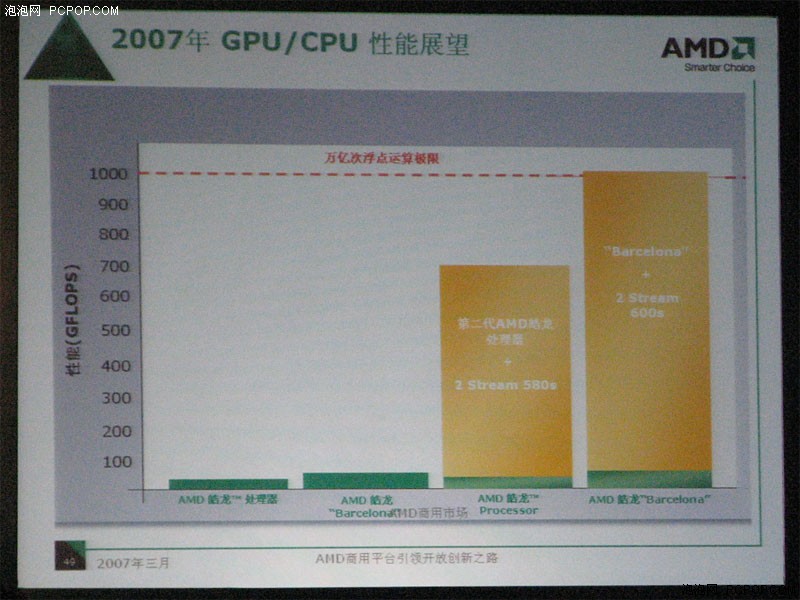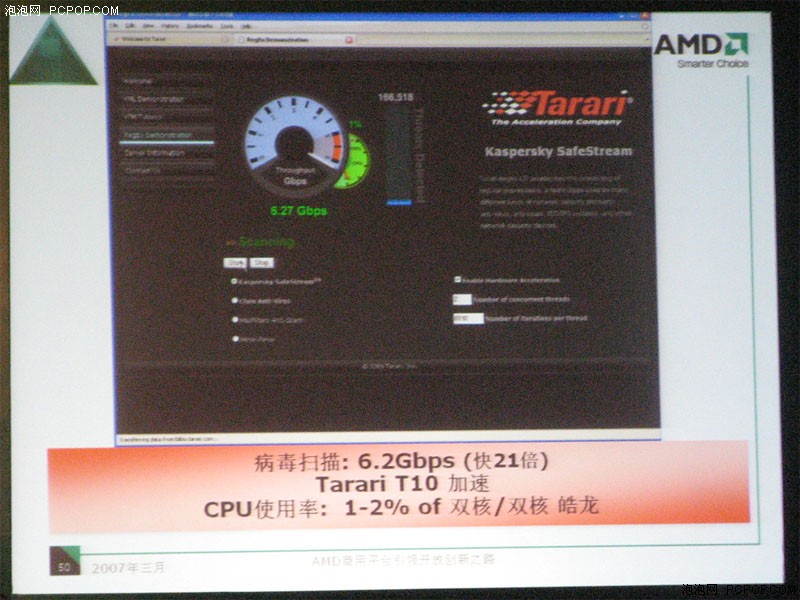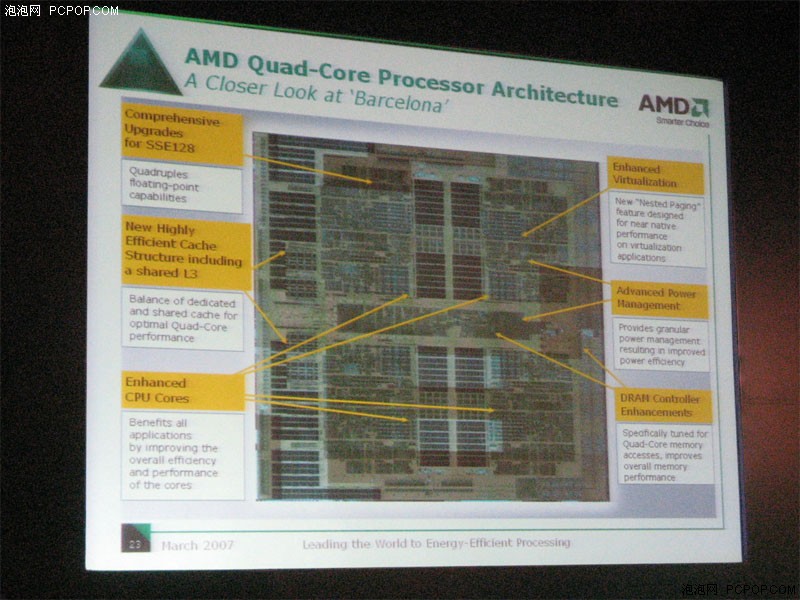EE Times: Latest News
AMD tips quad-core performance
Rick Merritt
EE Times
(02/28/2007 7:03 PM EST)
SAN FRANCISCO, Calif. — Advanced Micro Devices upcoming Barcelona processor will sport floating-point performance 42 percent higher than Intel's current top-of-the line CPU, the Xeon X5355 also known as Clovertown.
Mario Rivas, general manager of AMD's microprocessor group, said Barcelona will provide a double-digit leap in integer performance over the quad-core Xeon, though he declined to be more specific. Henri Richard, chief of sales and marketing at AMD, said Barcelona will have a significant integer performance lead over Intel's quad-core chips.
Although the floating point advantage is significant, few applications outside high performance computing and video encoding make use of it. Nevertheless, analysts were positive on the news.
"I thought Richard's comments were a strong vote of confidence in the product," said Nathan Brookwood, principal of market watcher Insight64 (Saratoga, Calif.).
"Virtualized Web servers don't use floating-point processing, but if AMD is seeing integer performance gains over Intel in double digits, that's a positive for them," said Dean McCarron, principal of Mercury Research (Cave Creek, Ariz.), referring to the most mainstream application for Barcelona.

 Pois só assim é que evoluímos a um ritmo natural, e não ao sabor de uma
Pois só assim é que evoluímos a um ritmo natural, e não ao sabor de uma  Ou será que já é isso que está a acontecer agora, só que ao ivés de ser unilateral é concertada?! What is the MATRIX??
Ou será que já é isso que está a acontecer agora, só que ao ivés de ser unilateral é concertada?! What is the MATRIX?? 









